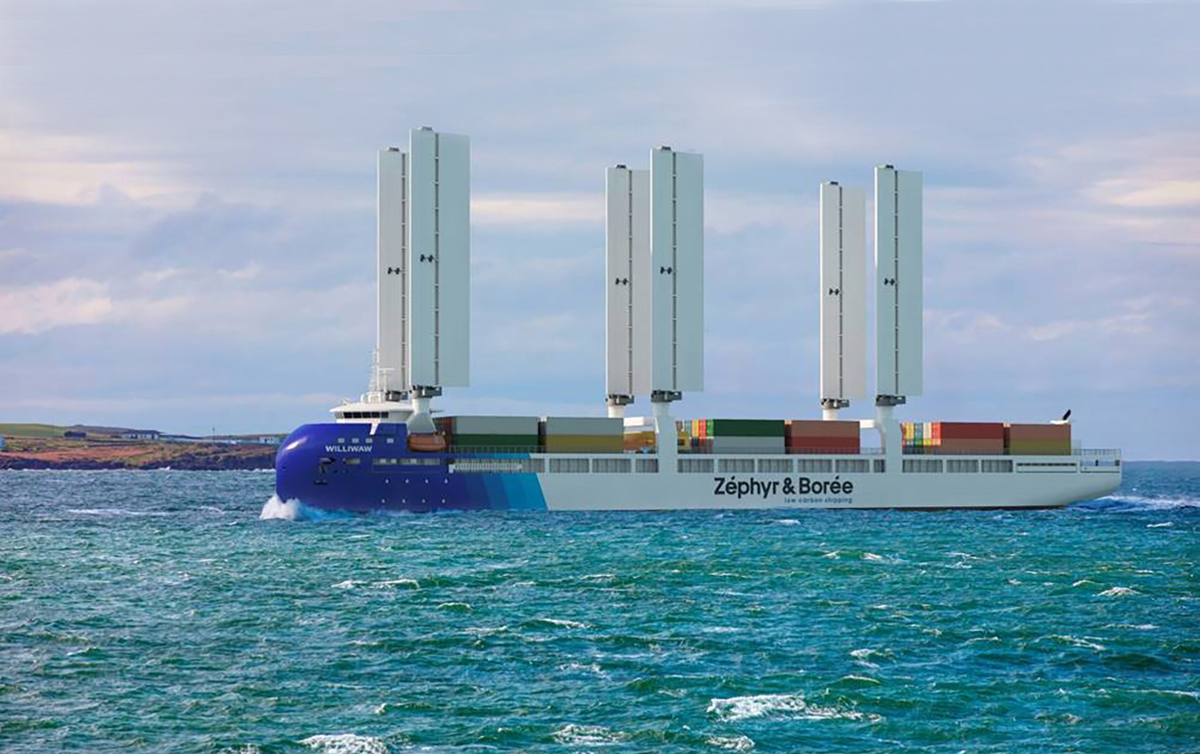IMO needs more ambitious energy efficiency target under CII – T&E
The IMO must couple a 9% greenhouse gas (GHG) fuel standard with 38% energy efficiency target for shipping to realistically meet IMO’s 2030 climate ambition, Transport & Environment (T&E) recommends.
 PHOTO: 3D model of containership designed with rotor sails. Zéphyr & Borée
PHOTO: 3D model of containership designed with rotor sails. Zéphyr & Borée
It is possible for the shipping industry to meet IMO’s 2030 climate target with uptake of only 10% zero or near-zero emission fuels. However, to achieve this, IMO needs to couple a 9% GHG fuel standard with a higher energy efficiency target under IMO’s Carbon Intensity Indicator (CII) regulation for the global fleet, according to T&E.
The GHG fuel standard is a technical measure that aims to gradually reduce GHG emissions from shipping until the industry achieves net zero by 2050.
The IMO’s CII regulation measures how efficiently a ship transports goods or passengers. It is expressed in grams of CO2 emitted per mt of cargo and nautical mile. The ship is then rated every year from A to E (A being the highest). Rating criteria will become stricter by 2030.
The CII must take a well-to-wake (WtW) approach for emissions and should require a 29-38% improvement in vessel's performance by 2030, compared to the 2018 baseline, T&E suggested. The current CII metric calculates emissions on a tank-to-wake approach.
‘Tall order and nearly impossible’
IMO’s climate strategy aims at cutting emissions by 20-30% by 2030, against 2008 levels. This target theoretically requires deployment of around 40% zero- or near-zero marine fuels in the next six years, Faïg Abbasov, shipping programme director at T&E wrote in a social media post.
T&E defines near-zero fuels as achieving at least 90% WtW emissions reduction by 2030 and 95% reduction by 2040 and zero-emission fuels as achieving 100% WtW emissions reduction by 2050, below the 2018 baseline.
This would ideally require IMO to set a carbon intensity reduction target in the range of 25-34% as part of its planned GHG Fuel Standard (GFS).
“This is a tall order and nearly impossible given the scale of the challenge,” Abbasov argued.
T&E recommended that the global shipping regulator revise its CII to measure either absolute WtW emissions and increase energy efficiency targets or to measure energy efficiency per transport instead.
“Wide range of literature has concluded that substantial emissions reductions can be achieved in this decade through speed reduction, installation of wind-assist and other energy efficiency technologies,” T&E explained.
Higher energy efficiency targets will also reduce vessel's overall consumption of potential alternative fuels in the future, reducing overall costs associated with green fuel transition, T&E said.
By Konica Bhatt
Please get in touch with comments or additional info to news@engine.online






